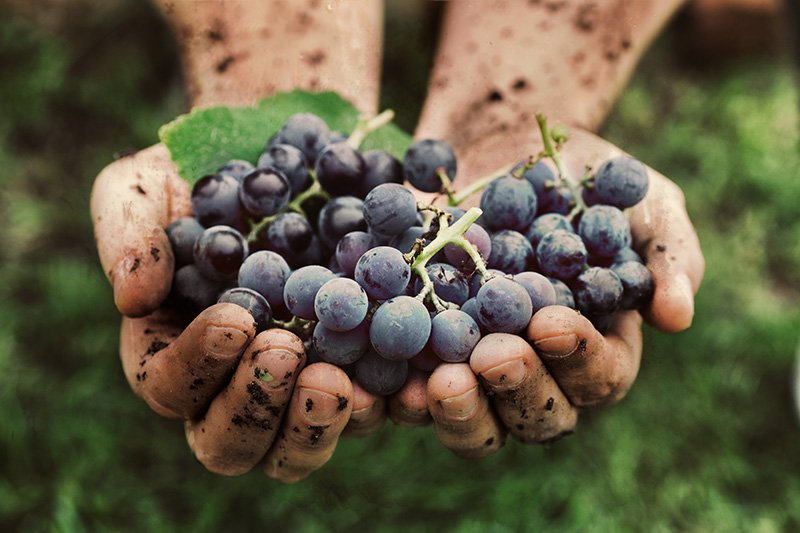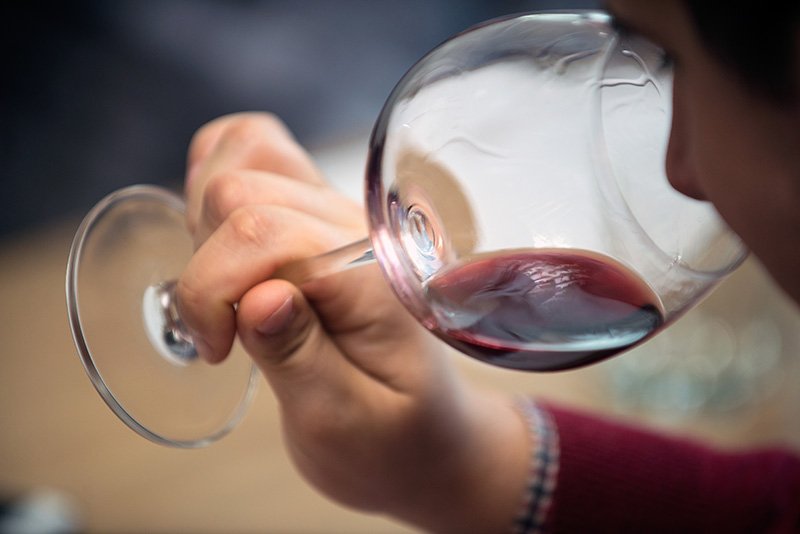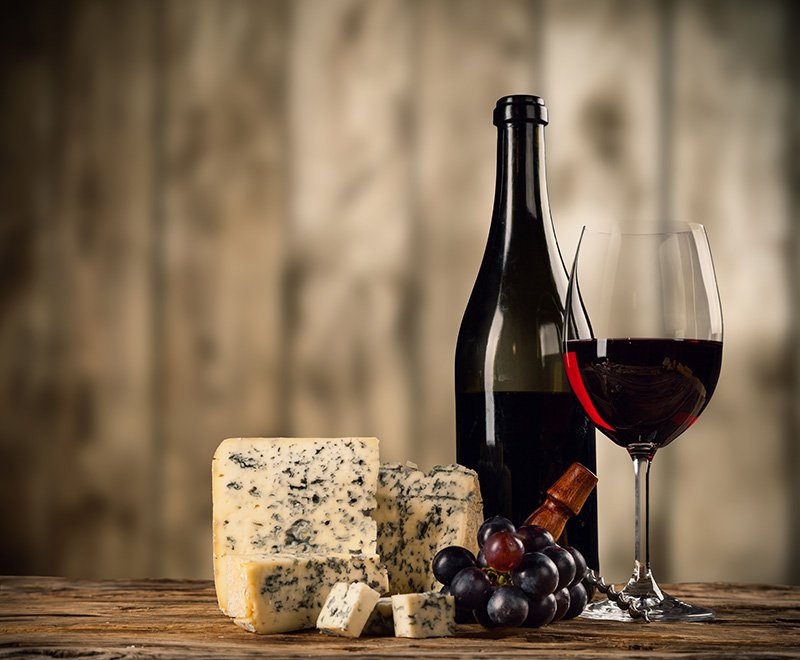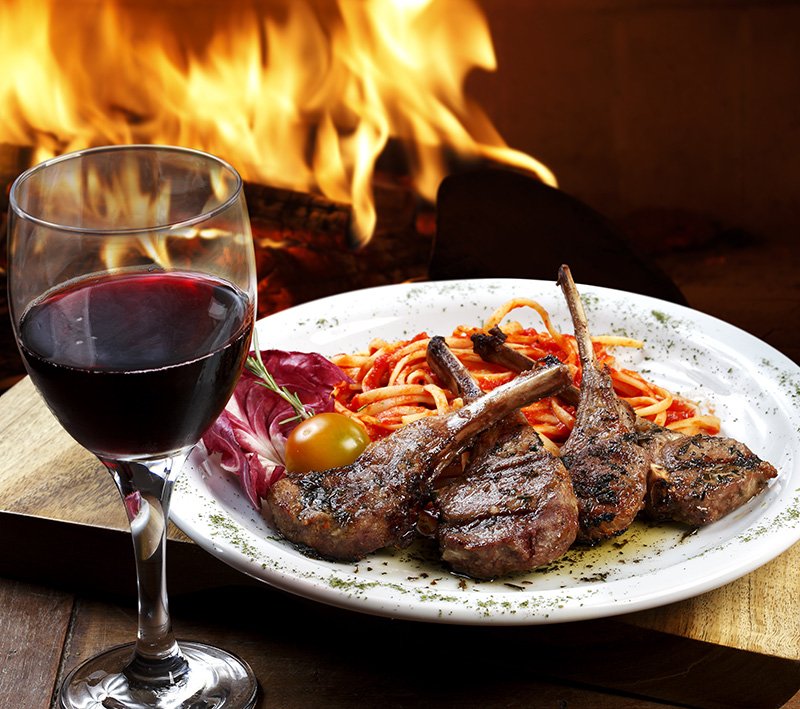Buy red wine in Calais Tax Free and get your VAT back !
Although traces of the first winemaking techniques can be found as early as the 3rd millennium BC around the Mediterranean basin, today red wine is produced on all continents.
Despite everything, red wine consumption is higher in Europe and North America where it represents more than half of total wine consumption.
Red wine: its colors and its production
Red wine: why is it red?
Quite simply because red wine is obtained from black grapes which give a red tint. (It is the pigments of the grape skin that give the color).

Its coloring will be more or less pronounced depending on the type of grape variety. For example, little colored with Pinot Noir or Grenache, or very dark with Syrah or Cabernet Sauvignon. But also depending on the length of maceration chosen, we will obtain nuanced colors for a grape variety ranging from a light red to a very dense red.
Red wine: its elaboration
As soon as the harvest is over, these grapes undergo a maceration period ranging from a few days to a month. This vatting period also makes it possible to extract the tannins (from the skin and the seeds) which, depending on the quantity and quality, will determine the structure of the wine and its suitability for aging.
Then the grapes start a first fermentation. This is called "alcoholic fermentation". It converts grape sugars into alcohol by the action of yeasts.
Then, and this is the difference with white wine, a second fermentation occurs for red wines. It is called "malolactic fermentation". Its purpose is to transform malic acid, which gives hardness, into lactic acid, which makes the wine more supple and stable.

Finally, aging of red wine involves two stages: assembly and aging.
Blending: two vinification techniques exist for vineyards that cultivate several grape varieties, either they are vinified together but in different vats if the maturity is sufficient, or the grape varieties are vinified separately to then carry out the assembly.
Aging: allows the development of wine aromas, for some great appellations the duration can be up to two years
Red wine: the different types and their pairings
"Light and fruity" red wines:
Pinot Noir:
Often cited for its elegance, this French grape variety, mainly cultivated in Burgundy, Loire, but also in Alsace, Savoie and Jura, gives the best of itself in these rather cool climates.
Early in nature and difficult to cultivate, it offers an aromatic palette combining the complexity of red fruits and clove notes evolving with age, towards nuances of tertiary aromas (undergrowth, leather, mushrooms). Bright and vibrant red in color, it has supple and silky tannins.
This light style wine has higher tart flavors than other wines. It will go easily with: cheeses (goat cheese or cream), white meats, stewed beef, pork ... and if you want to accompany a fish it will be the ideal partner ...
The Gamay:
Main grape of Beaujolais, it produces the ten appellations of the region. From its full name “Gamay noir à jus blanc” less known than its neighbor from Burgundy, it produces a lighter wine with a more pronounced fruitiness (blackcurrant, raspberry).
It will stand out easily with: cold meats, white meats, terrines, cheeses ...
“Fruity and full-bodied” red wines:
Grenache:
Popular in southern France and Spain (under the name Granacha), this easily recognizable grape is mostly used in the Rhône (generally blended with Syrah and Mourvèdre). It is more particularly used in the Châteauneuf-du-Pape appellation where it is part of the composition at 80%. It has low acidity and soft tannins. This fruity red wine (raspberry, strawberry) with an alcohol content above average, makes it a wine that will be appreciated with Mediterranean-type dishes, grilled meats, lamb, beef, cheeses (soft paste ) ...

The Merlot:
Merlot gives a wide range of flavors ranging from cherry to plum to chocolate. It gives very colorful (ruby red) and medium bodied wines with fairly soft tannins.
Widely used in Bordeaux where it is associated with Cabernet Sauvignon and Cabernet Franc, it is also found in the South West and Languedoc.
It will accompany red meats, stews, and cheeses ...
The Cabernet Franc:
It is the only grape variety used for the Bourgueil, Saint Nicolas de Bourgueil, and Chinon appellations. The Bordelais often blends this grape variety to make their great wines. Dark red in color (almost black) with dominant notes of peppers, it is appreciated for its aromatic finesse.
Grilled meats, roasted tomatoes, cheeses ...
“Powerful and spicy” red wines:
Cabernet Sauvignon:
King of Bordeaux wines, he has acquired worldwide fame, he produces very dark, tannic wines, developing dominant aromas of blackcurrant and peppers, leading to nuances of tobacco over time. Going very well with aging in barrels, it gives powerful and intense wines cut for aging.
It will obviously go well with powerful dishes, game, duck ... and especially prime rib ... it is one of the star wines of the Christmas meal tables.
Syrah:
Variety very established in the Rhone valley, it is also found in the Languedoc region, but it is also called "Shiraz" in Australia. This grape gives very aromatic colored wines and largely develops aromas of black, spicy and peppery fruits.
It particularly emphasizes all the dishes in which we find olives, but will go perfectly with roast lamb, game and creamy cheeses ...

Malbec:
Very well known in Argentina, it is established in France in the South West, as the main variety of Cahors wine, but also in the Loire, Languedoc and Bordelais (for blends). Dark purple red in color, it mainly expresses notes of blackberries, black cherries and tobacco. It is naturally rich in tannins which allows a good aptitude for aging.
Ideal marriage with beef, lamb, duck, beef bourguignon, game and hard cheeses ...
Here you are, now you have learned about the main grape varieties and styles of wine in France, of course this presentation is not exhaustive. There are many other grape varieties used in the blends, giving each wine a unique style.
It's up to you to discover it by going to draw in each region and appellations, the best estates. This is how you will find your style and set your preferences.
How can you get your VAT back when you buy wine in Calais ?
Red more if you want to make your red wine at home

